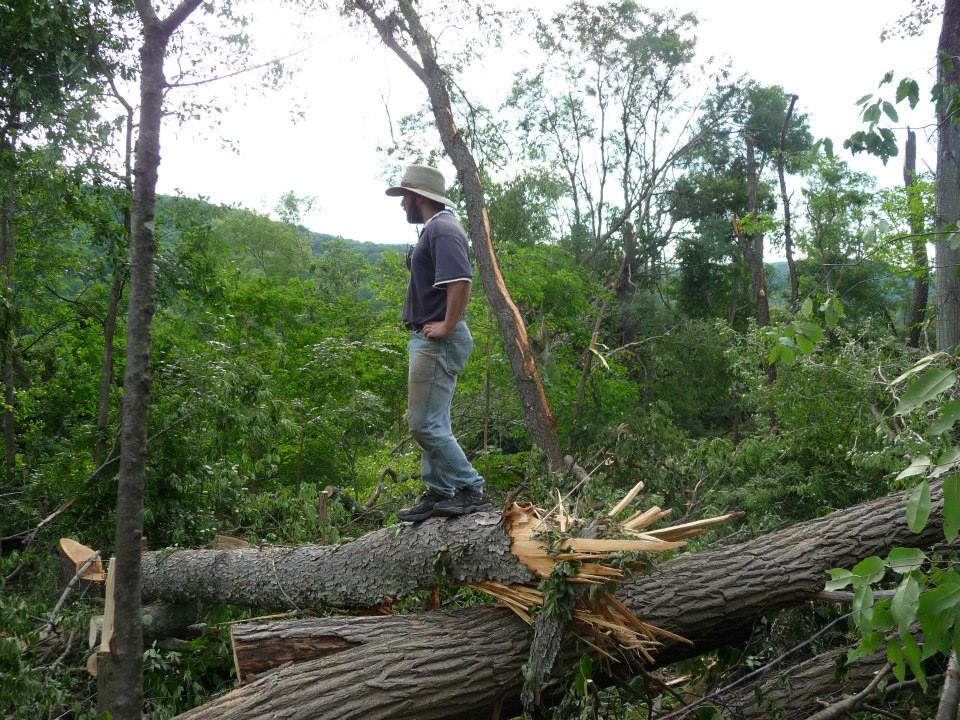
EF1 is not very strong for a tornado, but it was strong enough to uproot or snap in half nearly every tree on my uncle’s property. The road to his house was render utterly impassable, power was out for 50 hours, and phone/internet service was out for 8 days. The first lesson here is that if you are going to live in the country, and especially if you are going to homestead, make sure you own an electric generator. Kevin had freezers full of food and all of it was preserved by his portable generator.
This began the disaster clean-up process. There is no way this kind of work can be made truly safe, but if you are in such a situation the goal is to make it as less dangerous as possible. Ideally, if you have the money, hiring professionals is the way to handle such a disaster zone. However, like us you may not have the funds to pay the hefty cost of hiring professionals and in that situation we must do the best with what we have. Here are some tips:
- Absolutely do not work alone. Trees will be down, or hanging, in very dangerous situations. An extra pair of eyes can be the difference between seeing a danger or not. And if someone is hurt, a second person (or more) can be the difference between survival or not.
- Always work in pairs. It is not enough to simply have other people in the work area. Make sure you have a buddy who is watching you when you are using the chainsaw and is ready to help if something goes wrong.
- Wear safety equipment. Wear as much as you have, and as much as you can–ear protection, eye protection, head protection, hand protection, and chaps if you are using a saw. All such safety equipment is important when doing normal every-day chain saw work, but it is doubly important when working in a disaster zone. Full disclosure: We didn’t have hardhats, and I only wore chaps on the first day. This is a case of “Do as I say, not as I do.” But it is also an illustration of how hard it is to be safe in such a situation. It was brutally hot and humid weather and the brush and downed trees were very entangling so wearing chaps was extremely hot and made it more difficult to move around.
- If possible have at least two chainsaws available. Having a second chainsaw around allows you to cut the first saw free if (and inevitably it will) the first saw gets stuck trying to make a very difficult cut.
- Pace yourself and pay attention to your body. Take breaks when necessary. Not only is it dangerous work, but it is very hard work. Depending on your fitness level you could be in significant danger from exhaustion, heat stroke, or a heart attack. I am very fit, and was able to keep working and handling my saw long after other people would have needed to stop. Know your limits.
- Get plenty to drink, and eat. If you are working in a very hot environment, make sure you keep up your sodium (salt) and potassium which are very important for regulating your body and both are lost through sweating, and especially excessive sweating in hard, hot work. Eating salty foods is the quickest way to regain sodium, and bananas are high in potassium (some sports drinks may also be fortified with potassium).
- Avoid power lines. Enough said.
- Know when a situation is beyond your ability to handle. Even if you can’t hire a crew of professionals you can find someone more skilled than you are for felling a tree that is hung up in a position beyond your ability to manage.
- Don’t rush. Being in a hurry gets people hurt.
- Finally, know when to stop.
